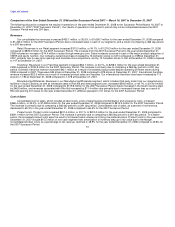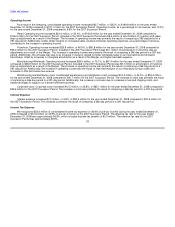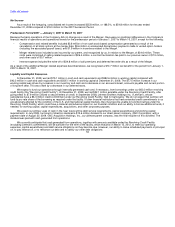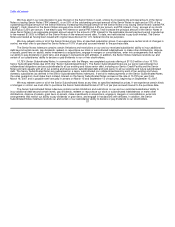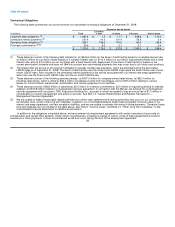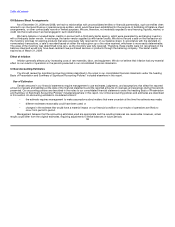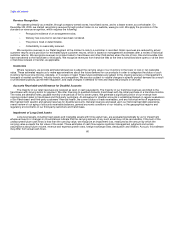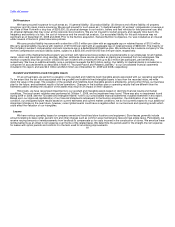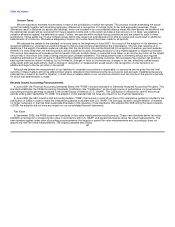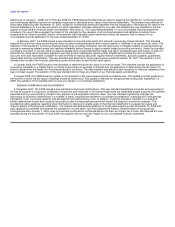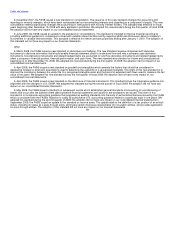GNC 2010 Annual Report Download - page 65
Download and view the complete annual report
Please find page 65 of the 2010 GNC annual report below. You can navigate through the pages in the report by either clicking on the pages listed below, or by using the keyword search tool below to find specific information within the annual report.
Table of Contents
Off Balance Sheet Arrangements
As of December 31, 2009 and 2008, we had no relationships with unconsolidated entities or financial partnerships, such as entities often
referred to as structured finance or special purpose entities, which would have been established for the purpose of facilitating off balance sheet
arrangements, or other contractually narrow or limited purposes. We are, therefore, not materially exposed to any financing, liquidity, market, or
credit risk that could arise if we had engaged in such relationships.
We had a balance of unused barter credits on account with a third-party barter agency, which were generated by exchanging inventory
with a third-party barter vendor. In exchange, the barter vendor supplied us with barter credits. We did not record a sale on the transaction as
the inventory sold was for expiring products that were previously fully reserved for on our balance sheet. In accordance with the standard on
nonmonetary transactions, a sale is recorded based on either the value given up or the value received, whichever is more easily determinable.
The value of the inventory was determined to be zero, as the inventory was fully reserved. Therefore, these credits were not recognized on the
balance sheet and would only have been realized if we purchased services or products through the bartering company. The barter credits
expired as of March 31, 2009.
Effect of Inflation
Inflation generally affects us by increasing costs of raw materials, labor, and equipment. We do not believe that inflation had any material
effect on our results of operations in the periods presented in our consolidated financial statements.
Critical Accounting Estimates
You should review the significant accounting policies described in the notes to our consolidated financial statements under the heading
Basis of Presentation and Summary of Significant Accounting Policies'' included elsewhere in this report.
Use of Estimates
Certain amounts in our financial statements require management to use estimates, judgments, and assumptions that affect the reported
amounts of assets and liabilities at the date of the financial statements and the reported amounts of revenues and expenses during the periods
presented. Our accounting policies are described in the notes to our consolidated financial statements under the heading Basis of Presentation
and Summary of Significant Accounting Policies'' included elsewhere in this report. Our critical accounting policies and estimates are described
in this section. An accounting estimate is considered critical if:
• the estimate requires management to make assumptions about matters that were uncertain at the time the estimate was made;
• different estimates reasonably could have been used; or
• changes in the estimate that would have a material impact on our financial condition or our results of operations are likely to
occur from period to period.
Management believes that the accounting estimates used are appropriate and the resulting balances are reasonable. However, actual
results could differ from the original estimates, requiring adjustments to these balances in future periods.
59




